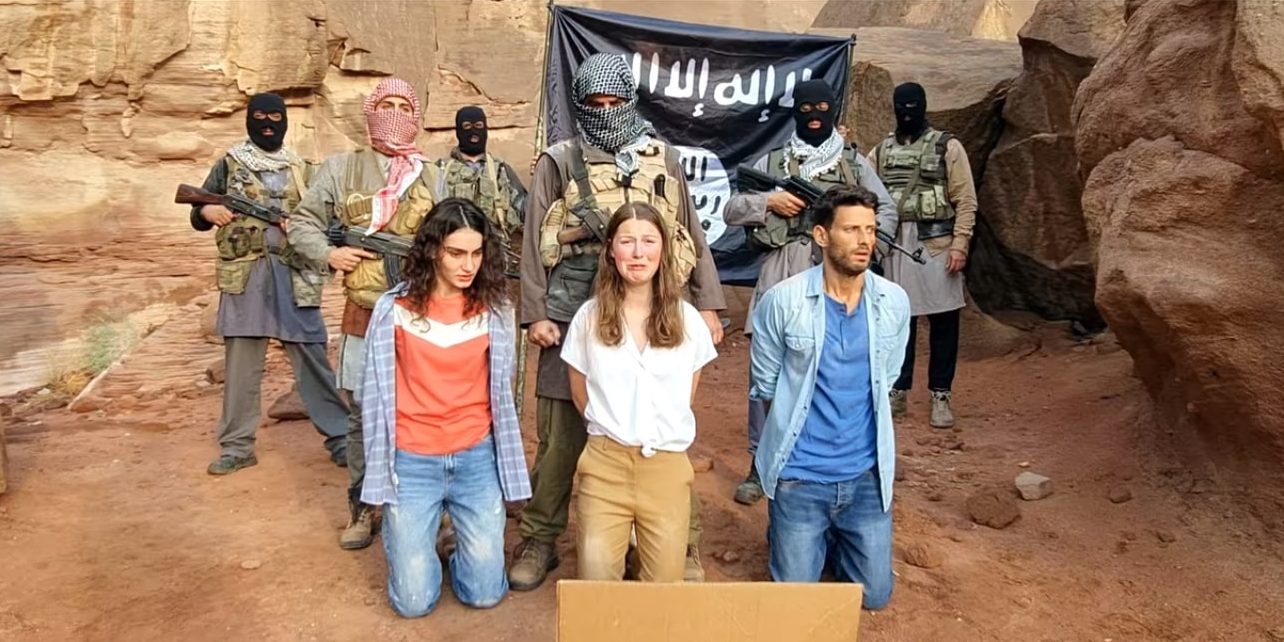Helmed by Kyrre Holm Johannessen and Ronit Weiss-Berkowitz, the Hebrew-Norwegian bilingual political thriller series ‘The Girl from Oslo’ (originally ‘Bortfort’) unveils a chilling and cathartic vision of a world under constant terror. While its charge on terrorism resonates deep within a region looking for the miracle of peace, the series also asks pertinent questions about the war on terrorism.
A Norwegian girl on vacation in Israel ventures out towards the Sinai valley with a pair of Israeli siblings. However, the story takes a bleak turn when a gunned tribe kidnaps them. Her desperate mother embarks upon a mission to save the girl. She gradually plunges herself into the vortex of dirty international politics. The show may be a treat for the senses, but it makes you ask whether the story has a basis in reality. If the question has indeed cropped up in your mind, let us probe further into the matter.
Is The Girl From Oslo a True Story?
‘The Girl From Oslo’ could partially be based on a true story. Although the story’s specifics are a fictional dramatization of sorts, the skeleton of the tale rests quite well in reality. Creators Kyrre Holm Johannessen and Ronit Weiss-Berkowitz have woven the story mingling reality and fiction. The realistic depiction of the violent geopolitical backdrop of the Middle East keeps the story engaging.

A voice of Bill Clinton says early in the opening sequence: “Today, we bear witness to an extraordinary act in one of history’s defining dramas.” It is the speech that kickstarted the 1993 Oslo Accord. The Oslo talk is where Alex meets Arik and Layla in the story. The accord in question was a peace process between the Government of Israel and the Palestine Liberation Organization catalyzed by the United Nations. It aimed to fulfill the rights of Palestinians to self-determination.
However, the peace talks reached a dead end. The failure of the 2000 Camp David Summit, in part, made it seem unlikely that the Oslo Accords would end the Israeli-Palestinian conflict. During the Second Intifada (a Palestinian uprising), the Israeli military re-obtained much of the regions designated as under Palestinian control. The ghost of the Oslo Accords haunts the series as the past seeps into the present.
Meanwhile, the core story seems to reflect actual events as well. In March 2013, reports surfaced in the media of a Norwegian and an Israeli national being abducted by ISIS. While they were traveling to the port town of Dahab, the vehicle was intercepted by Bedouin gunners, the reports divulged. The Norwegian national was identified as 31-year-old Ingvild Selvik Ask, a pediatrician. The militants asked for the release of their tribesmen from Israeli prisons. But interestingly enough, both the hostages were released by the militant bosses.
Much of the political factors that come into play in the series come off as realistic. Early in the story, we hear the mention of former Israeli Prime Minister Benjamin Netanyahu. The ministers of the cabinet unanimously agree that they would not repeat the mistakes of Netanyahu by releasing prisoners. One of the characters states that 40 percent of all prisoners released by Netanyahu have gone back to their militant ways.
While there is no source to attest to this estimate, Benjamin Netanyahu indeed released a total of 104 Palestinian prisoners as part of a peace agreement, a move that incited nationwide outrage. Therefore, considering all the aspects, the series remains tethered to the volatile reality of the Jordan River Basin, despite its beguiling fictional garb.
Read More: The Girl From Oslo Ending, Explained


You must be logged in to post a comment.